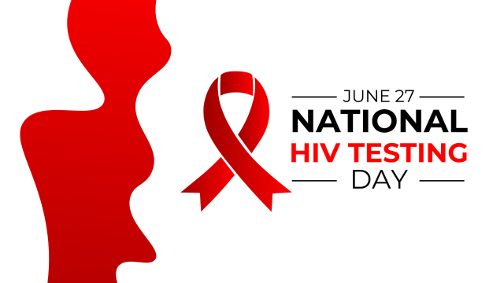Level Up Your Self Love, Check Your Status
June 29, 2024
Source: drugdu
 471
471
Don Tracy, Associate Editor
As a part of National HIV Testing Day, the Centers for Disease and Control Prevention encourages testing as a part of taking charge of individual health and wellness.
 Today is National HIV Testing Day (NHTD) and as part of this year’s theme, "Level up your self-love: check your status," individuals across the United States are being encouraged to get tested to show value, respect, and compassion for each other by taking charge of our health and wellness, according to the Centers for Disease and Control Prevention (CDC).
Today is National HIV Testing Day (NHTD) and as part of this year’s theme, "Level up your self-love: check your status," individuals across the United States are being encouraged to get tested to show value, respect, and compassion for each other by taking charge of our health and wellness, according to the Centers for Disease and Control Prevention (CDC).
“HIV testing is an essential entry point for services such as PrEP for those without HIV, and HIV treatment for those who have HIV,” reports the CDC. “Testing programs have been critical contributors to the 12% decrease in estimated HIV infections from 2018 to 2022, and a major factor contributing to ongoing disparities in HIV is a lack of access to and implementation of HIV testing and screening programs.”
As a part of this challenge, the CDC helped fund the launch of Together TakeMeHome (TTMH), a program aimed at distributing free HIV self-tests by direct mail. TTMH was created by Emory University in partnership with Building Healthy Online Communities, NASTAD, Signal Group, and OraSure Technologies. Between March 2023 and March 2024, the program was distributed to 219,360 people, mainly those disproportionately affected by HIV, including gay, bisexual, and other men who have sex with men; transgender women (of any race); and cisgender Black women. In a post-testing questionnaire, 24% had never been previously tested for HIV, while 25% had not tested in over a year.1
The first annual NHTD was on June 27, 1995, and was launched by the National Association of People With AIDS, with the intention of encouraging more people to get tested for HIV. Despite its success, the CDC found in 2016, that an estimated one in eight people were still unaware of their HIV-positive status.2
According to amfAR, the Foundation for AIDS Research, there are 1.2 million people in the United States living with HIV, and 13% are unaware of their positive status. Additional amfAR statistics include:
HIV diagnoses decreased by 8% in the United States between 2016-2019.
In 2020, African Americans accounted for 42% of all HIV diagnoses in the United States.
A total of 18,489 people diagnosed with HIV died in 2020 in the United States, with the organization suggesting that it could be due to any cause.
Also in 2020, 80% of those diagnosed with HIV received care within a month of initial diagnosis.3
There are multiple ways that you can be tested for HIV. According to the FDA, this includes antibody tests, combination (fourth generation) tests, and nucleic acid tests of the blood. Additionally, the FDA recommends routine screening for people above 13 years of age, especially those with a higher risk for infection.4
“HIV testing, including self-testing, is the pathway to engaging people in care to keep them healthy, regardless of their test result,” reports HIV.gov. “People who receive a negative test result can take advantage of HIV prevention tools such as pre-exposure prophylaxis (PrEP), condoms, and other sexual health services such as vaccines and testing for sexually transmitted infections. People who receive a positive test result can rapidly start HIV treatment (antiretroviral therapy, or ART) to stay healthy.”5
Low-cost or potentially free testing options can be found at gettested.cdc.gov.1
“As part of NHTD, please use the hashtag #HIVTestingDay on your social media channels and communicate to your audiences that there are many options for getting tested for HIV,” HIV.gov writes. “HIV testing is a critical tool to help us end the HIV epidemic in the United States. We appreciate everything you contribute to help us achieve this goal.”5
Read more on
- 20-Valent Pneumococcal Vaccine Approved for Clinical Trials January 20, 2026
- ADC205 Tablets Received Approval for Drug Clinical Trial January 20, 2026
- Sifang Optoelectronics makes strategic investment in Changhe Biotechnology January 20, 2026
- Mingde Bio plans to acquire a 51% stake in Hunan Lanyi through capital increase and acquisition January 20, 2026
- accelerating the transition of CLL treatment into a “chemotherapy-free era”. January 20, 2026
your submission has already been received.
OK
Subscribe
Please enter a valid Email address!
Submit
The most relevant industry news & insight will be sent to you every two weeks.



